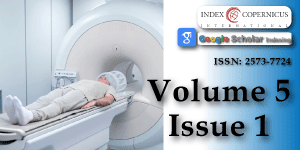Anal cancer - impact of interstitial brachytherapy
Main Article Content
Abstract
We evaluated a total of 115 patients diagnosed with anal cancer, who were treated at our clinic from 1995 to 2012. Their average age was 61 years, most often were diagnosed in stages II and III, in most cases it was a squamous cell carcinoma located in the anal canal. The mean follow-up was 83 months (minimum 1 month and maximum 240 months). We combined external radiotherapy with boost of brachytherapy or boost of external radiotherapy and possibly a combination of both boosts. Half of the patients received concomitant chemotherapy. We specifically evaluated local tumor regression, overall survival and the impact to therapeutic effect of the chosen irradiation technique. Complete regression was achieved in 92 patients, partial regression in 21 patients. Overall survival, regardless of stage, was 80% 3-year, 74% 5-year and 67% 10-year. The age of patients, the size of their own primary tumor and the therapeutic method used had a statistically significant effect on survival - especially the importance of brachytherapy was irreplaceable.
Article Details
Copyright (c) 2021 Kubecova M, et al.

This work is licensed under a Creative Commons Attribution 4.0 International License.
Gryc T, Ott O, Putz F, Knippen S, Raptis D, et al. Interstitial brachytherapy as a boost to patients with anal carcinoma and poor response to chemoradiation: Single-institution long-term results. Brachytherapy. 2016; 15: 865-872. PubMed: https://pubmed.ncbi.nlm.nih.gov/27720203/
Heilmann et al. Poster - Image guided boost brachytherapy for anal cancer: tumor and functional outcome, 2018, Radiotherapy and Oncology. 2018. https://www.postersessiononline.eu/173580348_eu/congresos/ESTRO37/aula/-V_252_ESTRO37.pdf
Frakulli R, Buwenge M, Cammelli S, Macchia G, Farina E, et al. Brachytherapy boost after chemoradiation in anal cancer: a systematic review. J Contemp Brachytherapy. 2018; 10: 246-253. PubMed: https://www.ncbi.nlm.nih.gov/pmc/articles/PMC6052386/
Oehler-Jänne C, Seifert B, Lütolf UM, Studer G, Glanzmann C, et al. Clinical outcome after treatment with a brachytherapy boost versus external beam boost for anal carcinoma. Brachytherapy. 2007b; 6: 218-226.
Moureau-Zabotto L, Ortholan C, Hannoun-Levi JM, Teissier E, Cowen D, et al. Role of Brachytherapy in the Boost Management of Anal Carcinoma With Node Involvement (CORS-03 Study). Int J Radiat Oncol. 2013b; 85: e135-e142.
Lestrade L, De Bari B, Pommier P, Montbarbon X, Lavergne E, et al. Role of brachytherapy in the treatment of cancers of the anal canal. Strahlentherapie Und Onkologie. 2014; 190: 546-554.
Carvalho C, Glynne-Jones R. Challenges behind proving efficacy of adjuvant chemotherapy after preoperative chemoradiation for rectal cancer. Lancet Oncol. 2017; 18: e354-e363. PubMed: https://pubmed.ncbi.nlm.nih.gov/28593861/
Saarilahti K, Arponen P, Vaalavirta L, Tenhunen M. The effect of intensity-modulated radiotherapy and high dose rate brachytherapy on acute and late radiotherapy-related adverse events following chemoradiotherapy of anal cancer. Radiother Oncol. 2008; 87: 383-390. PubMed: https://pubmed.ncbi.nlm.nih.gov/18501454/

